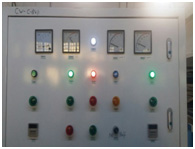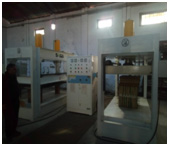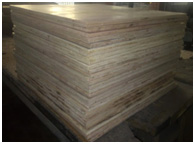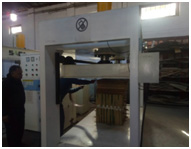
Radio Frequency (RF) curing of adhesives
- March 7, 2019
- 0
Radio Frequency (RF) curing of
adhesives in manufacturing of Composites
D.P. Khali
Scientist, Composite Wood Discipline, Forest Products Division
Forest Research Institute, Dehradun
khalidp@icfre.org

Composites manufacturing point of view, hot pressing is a critical step in the manufacturing of composites. During the conventional hot platen pressing, heat is sequentially transferred from the platen to the panel core through heat conduction and convection resulting varied time of thermoset resin curing. Due to which densities of the pressed composites across the vertical direction are usually non uniform. Hot platen pressing requires extremely long times for heat to transfer from surface to the core, particularly when pressing thick composites.
The radio frequency (RF) may be used for obtaining heat to cure thermoset resin in composites. The RF electrical impulses are transmitted through material, polarized parts such as thermoset resin and moisture vibrate along with the field. This motion of the thermoset resin and moisture generates a large amount of frictional heat, which can be used for the rapid curing of thermoset adhesives. RF current, however, causes a uniform heating of the wood, so that the center is heated as fast and to the same degree as the outer surfaces. RF current gives a very fast uniform temperature rise and materials with any volume and cross-sectional dimensions can be heated in a very short time.
RF curing may thus constitute a good alternative
to improve production by drastically reducing curing times, yield thicker boards,
make year-long operating conditions more uniform through penetrating and uniform heating,
high energy efficiency, and
increased operational flexibility.
However, the process is optimized for the manufacturing of veneer based composites.




Radio Frequency Generator Hydraulic Press Plywood Radio Frequency duel hydraulic press































































